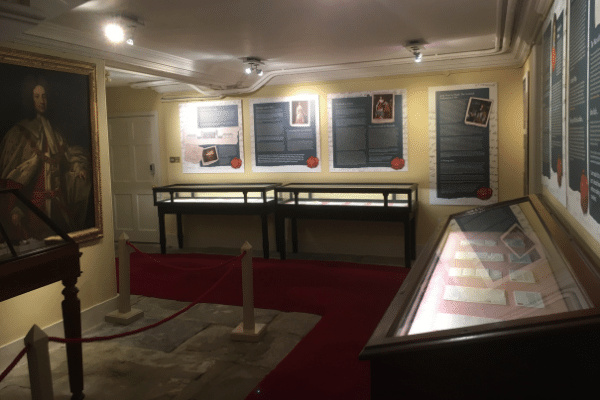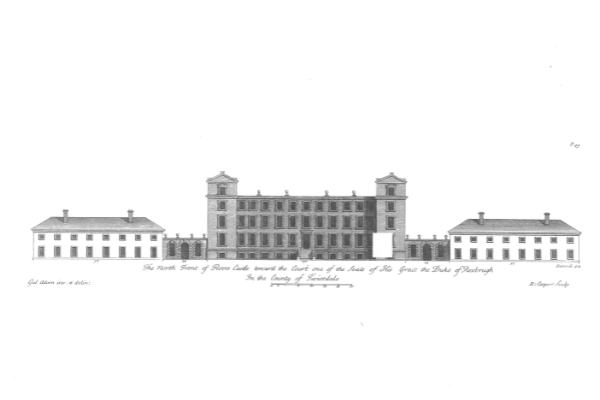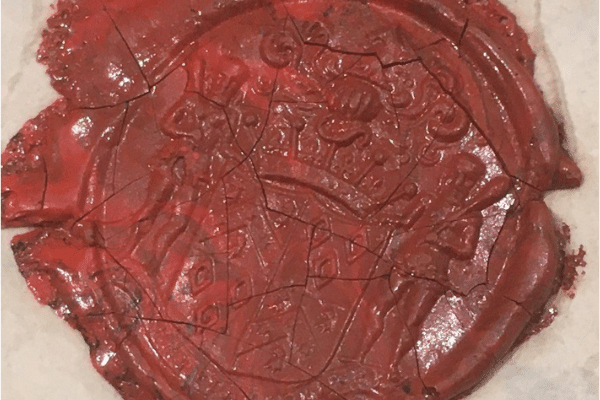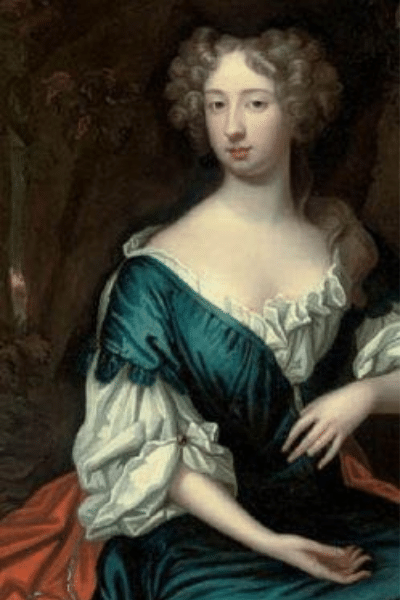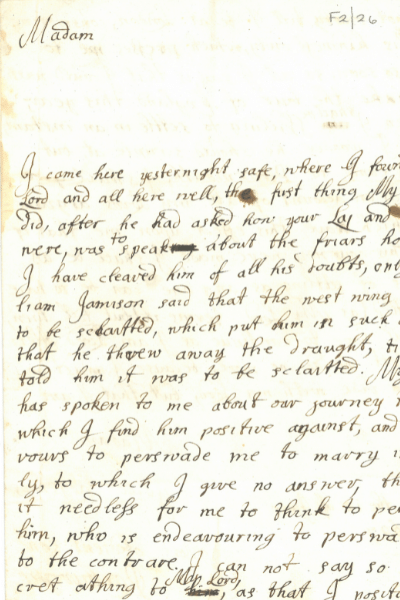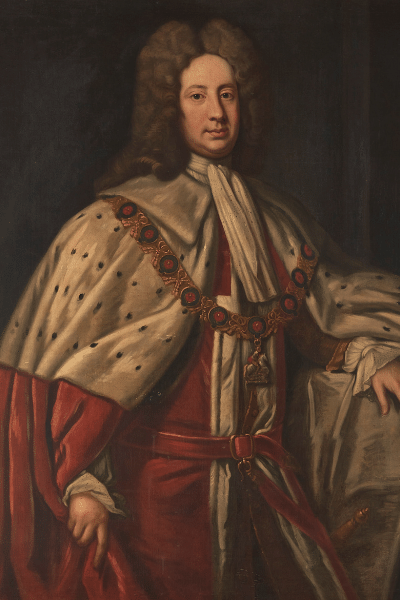The 300 Years of Floors Castle Exhibition

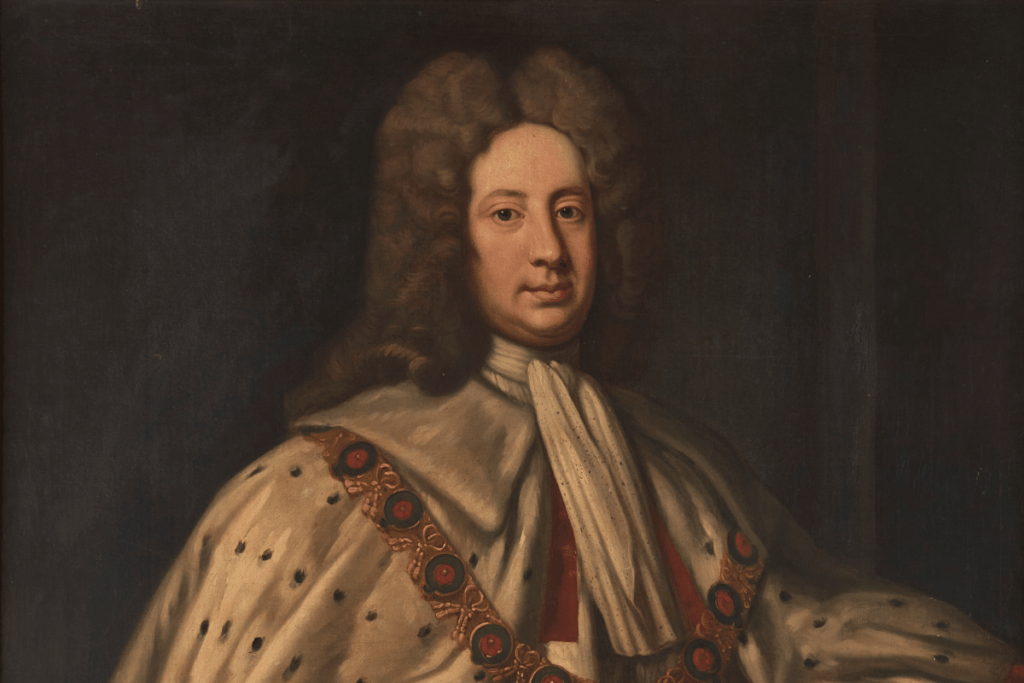
Enjoy spending some time in the world of the 1st Duke
When I was first thinking about putting an exhibition together around the 300th anniversary of the building of Floors Castle, the initial foray into the subject was not at all promising. I unearthed a document from one of my illustrious predecessors identified only by the initials H. M. C. Produced on a typewriter in 1965, the document opens with,
‘The building of Floors Castle presents a difficult problem for the architectural historian because none of the original designs appear to have survived, and nearly all the 1st Duke’s papers are also missing.
All that remains in the Charter Room at Floors is the unsorted correspondence of the Duke’s mother, the dowager Countess of Roxburghe, to whom he wrote regularly from London, and some incomplete building accounts.’
Being a strong-willed, independently minded individual, I remained unperturbed by the mysterious H. M. C and the pessimism found in this historical missive, so headed to the Charter Room to conduct my own investigation and prove him wrong.
In doing so I had neglected to observe the primary tenet of historians throughout time, to learn from the mistakes of the past and to build upon the work of others. H. M. C was quite correct, and the cupboard was bare.
This presented me with an opportunity. Rather than focus the exhibition on the building of Floors Castle in the 1720s, an avenue now largely closed to me in any case, the scope could be expanded.
The period of John Ker’s life (1680-1741) spans a fascinating period in the history of Britain. It begins with the death of Charles II and covers the reign of James II, his deposition, the Glorious Revolution and the installation of William of Orange and Queen Mary as joint Monarchs.
There follows the reign of Queen Anne and the Union of the Parliaments of England and Scotland, the literal creation of Modern Britain, before the dynastic shift from the House of Stuart to the House of Hanover and the reign of George I. Throw in a number of Jacobite rebellions and the odd continental war, and you have a story well worth the telling.
We are fortunate that the archive here at Floors Castle contains a wealth of historical material. Much of it relates to the running of a large estate, and all the minutiae of tenant’s rents, land management, grants, acquisitions, and administration.
Within this mountain of material sits a large collection of letters written to Margaret Hay, countess of Roxburghe and mother to both the 4thEarl and 5thEarl/1st Duke of Roxburghe.
Throughout her long life (1657-1753) she corresponded with a great many people all over the country. One thing we do know for certain, from a throwaway line in a letter to the Countess from local MP William Bennett, is precisely when the building here began. He wrote to her on the 18th May 1721, that ‘This day I go to the Floors, to see the ground stone of the new building laid’.
She also corresponded regularly with her second son, the man around whom the exhibition revolves. Letters are a unique, if difficult, medium for understanding the past.
On the one hand, they are rich in anecdotal detail and provide a personal perspective on broader events; a window into the personal lives of correspondents it is simply impossible to beat for the intimacy and nuance they provide. On the other hand, they are rather inconvenient articles. Those involved in the exchange both know the subject matter, and so don’t explain their meaning in detail. They often abbreviate names, ‘Lord N came to supper on Saturday’, and though the date often tells us they were writing when something of enormous national significance was occurring, they both were aware of it occurring, and so rarely wasted ink on it. Finally, of course, without corresponding letters from sender and recipient, it is a very one-sided conversation!
Survival of such material is also often rather patchy. This is certainly the case with the letters the Countess received from the 1st duke over the years. The time when he was in Europe during 1701-02, for example, has excellent coverage. This is perhaps because this trip represents the first time that he was away from home for any prolonged period, and his mother made efforts to deliberately preserve his letters.
The coverage becomes increasingly more sporadic as they both aged. I would argue this doesn’t necessarily suggest they were writing to each other less often, merely that the subject matter did not warrant retention. There is also the fact that it is entirely possible for paper record to be lost, burned, exposed to damp, torn or otherwise in the three centuries between them being written and being read by me.
If only someone had mentioned at the time that some poor soul may want to create an exhibition for the public out of the collection!
A story that becomes about the man who had the Castle built, rather than the Castle itself, a chance to view massive historical change through the lens of one man and his role in it.
What remains to be read has allowed us a glimpse into the world of the 1st Duke of Roxburghe. It has allowed us to commemorate three hundred years of family life and history here at Floors Castle by telling the story of the man responsible for its construction, and telling it largely in his own words.
It is a rare privilege to have this kind of personal access to a man that lived, laughed and loved three centuries ago, and one to which I hope we have done justice.
The exhibition opens here at Floors Castle on April 30th, and is free to access with your Castle admission ticket. We hope that you enjoy spending some time in the world of the 1st Duke as much as we have enjoyed telling his story.
Written by
Dr Matthew Thompson
Exhibition Curator & Operations Manager

